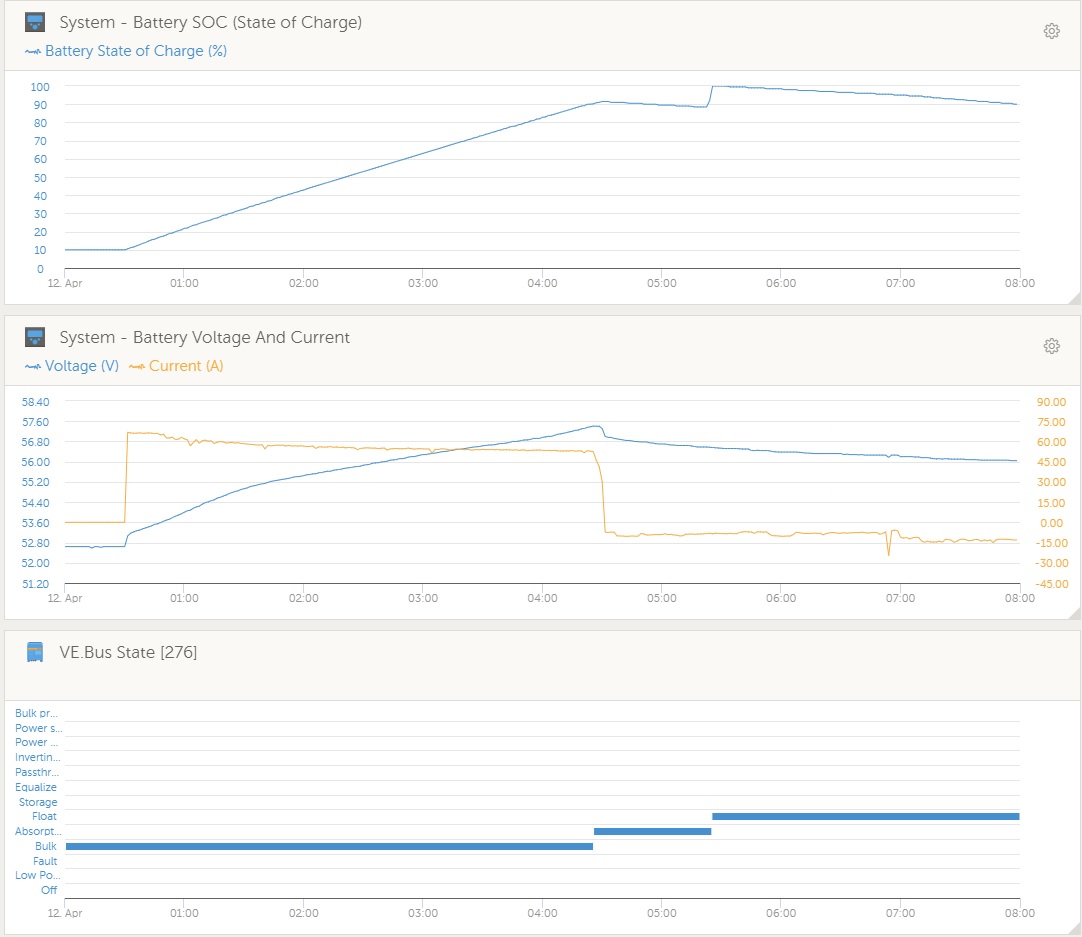Hi,
My SOC increases even while the battery is discharging.
I have noticed that when using ESS the Inverter is always showing charging in the VBUS state similar to this post: https://community.victronenergy.com/questions/32283/ess-ve-bus-state-charging-behaviour.html
I have scheduled charge at 00:30 for 4 hours, so at 4:30 the MPII starts inverting to supply the house load. However the Charger side of things seems to continue the Bulk-Absorb-Float cycle. This causes the SOC to jump to 100% even though its been discharging for nearly an a hour. I suspect this is due to the 1 hour Absorption timer.
Is this expected operation? It doesn't always happen and is not consistent and causes different depths of discharge.
This can be seen in the graphs below with the jump in SOC happening at approx 05:30.
Many Thanks

